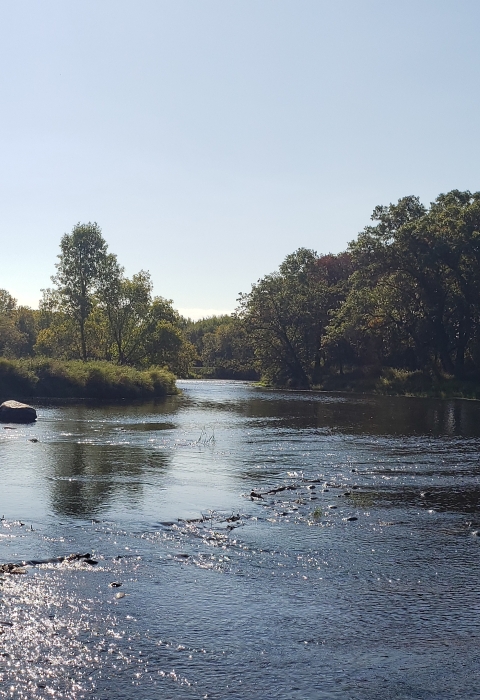What We Do
The National Wildlife Refuge System is a series of lands and waters owned and managed by the U.S. Fish and Wildlife Service. Wildlife conservation is at the heart of the refuge system. It drives everything we do from the purpose a refuge is established, to the recreational activities offered there, to the resource management tools we use. Selecting the right tools helps us ensure the survival of local plants and animals and helps fulfill the purpose of the refuge.
Management and Conservation
Refuges use a wide range of land management tools based on the best science available. Some refuges use prescribed fires to mimic natural fires that would have cleared old vegetation from the land helping native plants regenerate and local wildlife to thrive. Other refuges contain Wilderness areas where land is largely managed passively. The management tools used are aimed at ensuring a balanced conservation approach where both wildlife and people will benefit. At this field station our conservation toolbox includes:
Prescribed fire
Fire has played an important role in the health and management of oak savanna’s and prairies. Oak savanna is a plant community created and maintained by wildfires and grazing by large herbivores, such as bison or elk. Prairies are fire dependent ecosystems, relying on periodic fires to maintain their health and productivity. Today, the refuge uses prescribed fire to help mimic the effects of wildfires. Burning encourages the growth of native wildflowers and grasses, while reducing competition from non-native grasses and encroaching woody vegetation.
Invasive species management
Invasive species are plants and animals that are not native to an area and cause harm. Identifying and treating invasive species invasive species
An invasive species is any plant or animal that has spread or been introduced into a new area where they are, or could, cause harm to the environment, economy, or human, animal, or plant health. Their unwelcome presence can destroy ecosystems and cost millions of dollars.
Learn more about invasive species is important, as many do not have natural predators that keep them in check, allowing them to spread and become abundant. The refuge has several invasive species it maps, treats and monitors including common buckthorn, Siberian elm, black locust, purple loosestrife, spotted knapweed and butter-and-eggs.
Conservation haying
Conservation haying allows vegetation to be cut and removed from sites, when other natural disturbances, such as fire and grazing, are absent. It prevents the buildup of large amounts of litter, or dead plant material, which if left unmanaged can negatively impact native vegetation. Today, the refuge uses haying to reduce woody vegetation encroachment and to improve the integrity of native vegetation.
Law Enforcement
U.S. Fish and Wildlife Service law enforcement officers have a wide variety of duties and responsibilities. Officers help visitors understand and obey wildlife protection laws. They work closely with state and local government offices to enforce federal, state and refuge hunting regulations that protect migratory birds and other game species from illegal take and preserve legitimate hunting opportunities.
Laws and Regulations
Many laws and regulations are relevant to national wildlife refuges. They range from why a refuge was established to ensuring international treaty obligations are met to managing for threatened and endangered species and protecting cultural resources. The Fish and Wildlife Act of 1956 and Emergency Wetlands Resources Act of 1986 are important pieces of legislation regarding the establishing authorities and primary purposes of Crane Meadows National Wildlife Refuge.
